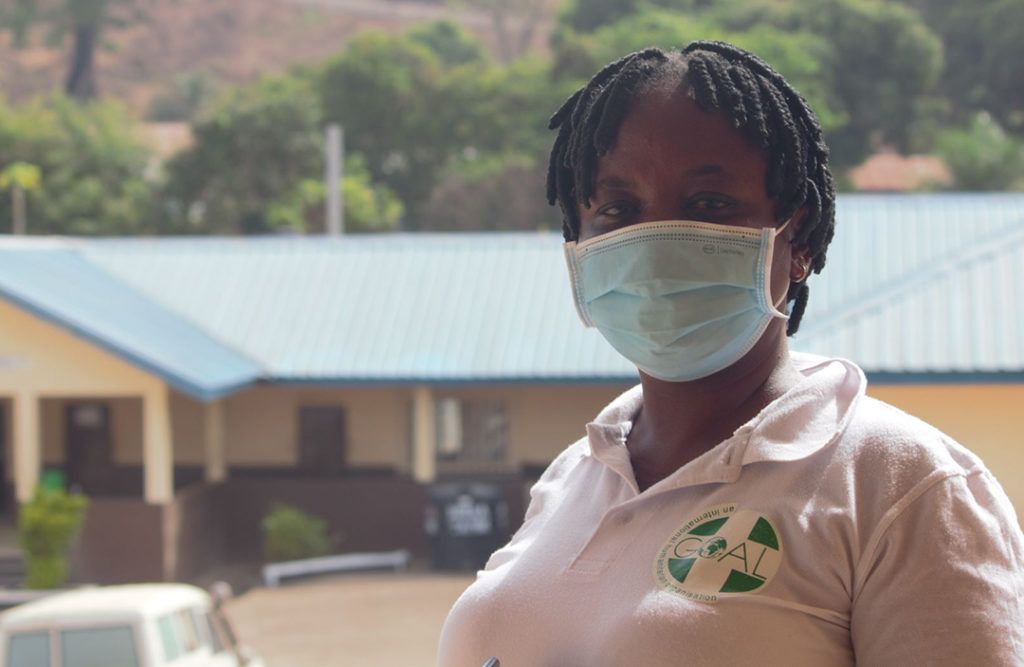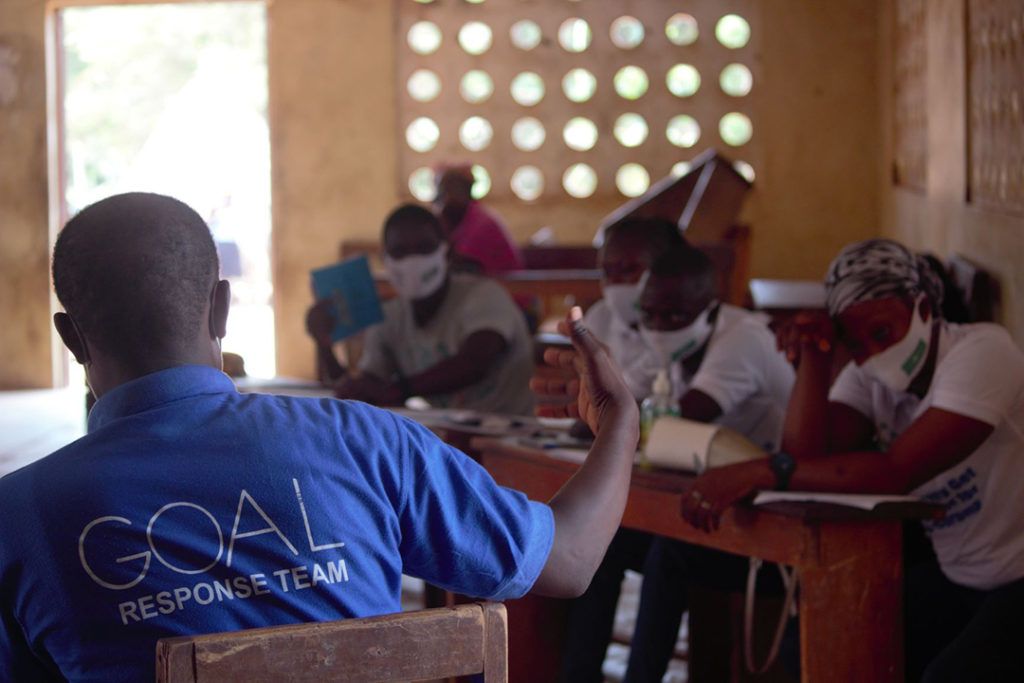 Stories
Stories
April 26, 2021 • 3 min read
GOAL was at the forefront of the fight against Ebola in Sierra Leone in 2014 and 2015. With neighbouring Guinea declaring an Ebola outbreak in February, GOAL is preparing communities on the border for a possible outbreak, thanks to support from Irish Aid.
Building on experience
Sierra Leone, neighbouring Guinea and Liberia, experienced a major outbreak of Ebola in 2014 and 2015. Tragically, the outbreak led to the deaths of over 1,500 people.
GOAL was at the forefront of the fight against Ebola, and developed the Community-Led Action approach to tackling the spread of the virus.
GOAL led the extremely successful and internationally recognised Social Mobilisation Action Consortium (SMAC). It focused on mass media campaigns, outbreak control, social mobilisation, community engagement and behaviour change. This initiative engaged over 2,500 community mobilisers in over 10,600 communities.
The impact of SMAC was illustrated by surveys, showing that;
- Over 96% of the population received correct information about safe burial, Ebola referral and safe home-based interventions.
- 90% of communities practiced high-level Infection Prevention Control within the household and community.
Social mobilization to change behaviours was perceived as one of the most effective ways of preventing transmission and is now being employed again in response to the 2021 Guinea Ebla outbreak.
Ebola outbreak declared in Guinea
On February 14th, 2021, Guinea declared an Ebola Virus Disease (EVD) outbreak after three cases were confirmed. This is the first time EVD has been reported in Guinea since 2016.
The border between Sierra Leone and Guinea is very porous. Over 180 unofficial crossings with heavy movement of people and goods.
Thanks to funding from Irish Aid’s Emergency Response Fund, GOAL has begun implementing a Preparedness Response in 70 of the most at-risk border communities in Sierra Leone. Community engagement is a key approach to this response, alongside: assessing health clinics along the border; supplying facilities with Infection Prevention Control materials and assisting in the National Government of Sierra Leone’s EVD Preparedness Coordination.
Currently, according to GOAL’s baseline study within communities;
- Only 8% of people can correctly identify at least three ways to prevent the spread of EVD.
- Only 21% can correctly identify symptoms.
GOAL teams hope to employ the previously successful Community Led Approach (CLA) model to ensure communities can correctly identify symptoms and create community-led approaches to protect each other.

Roseline is working with local communities to tackle the spread of Ebola
Community Led Approach – How it works
Under the CLA approach, Community Mobilisers – community members who work in pairs within their own communities – will support small neighbourhood units to do their own appraisal and analysis of EVD, or any other disease outbreak. They will look at the effects, and the likely future impact if no local action is taken.
The idea is to help residents understand the urgency and the action they can take to prevent the spread of EVD and or Covid-19, and to ‘trigger’ a collective desire to develop a community action plan.
No action plan is the same, as the success of this model lies in allowing communities decide for themselves how to protect each other. Plans of action are created and can include good hygiene practices for everyone, the re-design of community hubs to facilitate physical distancing. These plans also include staying at home without going hungry, seeking medical attention for those who are sick, and shielding older people and those with underlying medical problems etc.

With Irish Aid funding, GOAL has been re-training mobilizers along the border with EVD refresher courses before they start working in pairs work to alert the communities along the porous border to be aware of the re-emerged threat of Ebola.
There are 78 unofficial border crossings separating some chiefdoms and neighbouring Guinea, with heavy movements of people and goods meaning communities need to be made aware of the threat if Ebola comes back.
In one village in Mafaray, Dixon chiefdom, Kambia, Ibrahim Sorie Soma from the Health Facility Management Committee represents over 26 border villages.
“We are grateful for the community mobilisers and GOAL. We need to man our border,” Ibrahim says.
Ibrahim underlined the innovative community engagement strategy at the heart of the approach. “This particular structure [CMs and CLA] is really helping us, because the Health FMCs cannot disseminate health messages in the same way to the community.”
Working closely with local communities and leaders like Ibrahim, it’s hoped another Ebola outbreak can be avoided.
